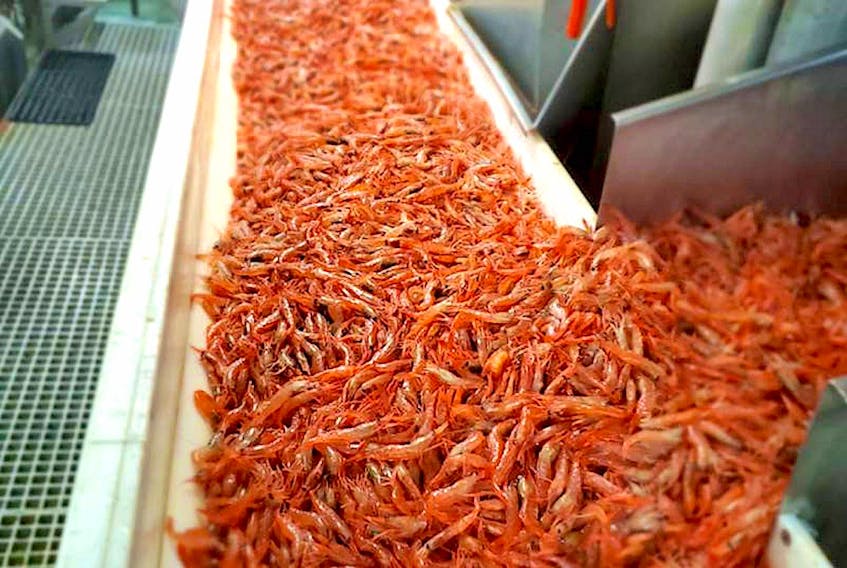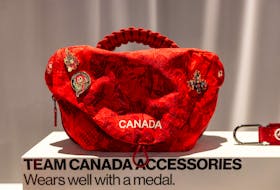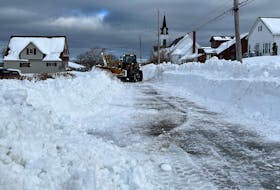HOPEDALE, N.L. — The Nunatsiavut government (NG) says it feels betrayed after the total allowable catch for northern and striped shrimp in the Eastern and Western Assessment Zones were released earlier this month and the Labrador Inuit were not included.
The quotas for the zones, which are partially within or adjacent to part of the Labrador Inuit Land Claim, were split between Nunavut and Nunavik. This has been an issue since 2013, when the borders of the eastern zone were redrawn to include waters that are part of the NG settlement area.
NG Lands and Natural Resources Minister Greg Flowers told SaltWire as a former fisher he had been aware of the issue before entering politics and has been working on it since he became the minister responsible.
“(The federal fisheries department) could at least talk to me and tell me why we can’t have this. There’s no courtesy as far as I’m concerned. We’re a recognized self-government, we’re at least entitled to Ottawa responding to us. They’re not that busy.” — Greg Flowers
He doesn’t understand why this has been an issue for so long or why Nunatsiavut beneficiaries aren’t getting access to this part of the fishery. As part of their land claim agreement, he said, they are entitled to 11 per cent of the quotas in their waters.
“This should be a no-brainer that we would be on the list for how this quota is distributed,” he said from his office in Hopedale. “We’re not trying to get something we don’t believe we have a right to. There’s something wrong with what the federal government is doing to us.”
Flowers said he’s been trying to get a meeting with federal Minister of Fisheries Bernadette Jordan over the issue all year. There was some back and forth from her office at first, he said, agreeing to meet with him before the decision was made and then agreeing to meet with him after. He stepped up his efforts when he knew the decision was looming, he said, and got no reply to emails or phone calls.

“They could at least talk to me and tell me why we can’t have this,” he said. “There’s no courtesy as far as I’m concerned. We’re a recognized self-government, we’re at least entitled to Ottawa responding to us. They’re not that busy.”
Flowers said getting access to the northern shrimp would have great benefits for Nunatsiavut and their fishers, especially with the decline in crab and crab quotas off the coast.
SaltWire reached out to DFO and Jordan’s office with questions about the decisions and received a statement via email.
“Our Government understands the importance of the fisheries for Labrador Inuit communities,” the statement read. “Minister Jordan will meet with Minister Flowers to discuss the northern shrimp decision and find a collaborative path forward.”
The Torngat Joint Fisheries Board (TJFB), which makes recommendations relating to the conservation of species, stocks of fish, aquatic plants, fish habitat, and the management of fisheries in the Labrador Inuit Settlement Area, made a submission to Jordan in March recommending that NG be included in the allocation for the eastern zone.
The submission, signed by Richard Comerford, chair of the TJFB, said NG should regain access to historical fishing grounds that were lost in 2013 and are still within and next to the Labrador Inuit Settlement Area. Comerford sent another email to Jordan in May, reiterating the boards position on shrimp management in the area.
The board said they advised the federal government of these concerns before the 2013 decision and have advised them of it every year since.
“We maintain that the status quo is objectively inequitable, to say the least, and its perpetuation year over year undermines the Government of Canada’s commitment to reconciliation, and the credibility of fisheries co-management more specifically,” Comerford wrote. “It is difficult to reconcile commitments to reconciliation with shrimp co-management in the Eastern Assessment Zone.”










